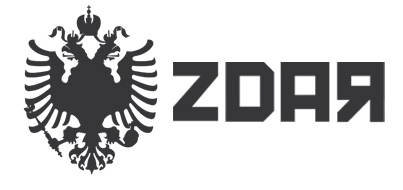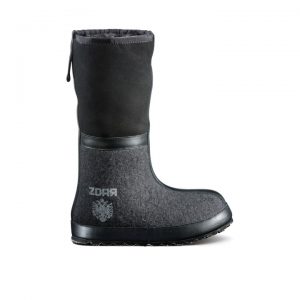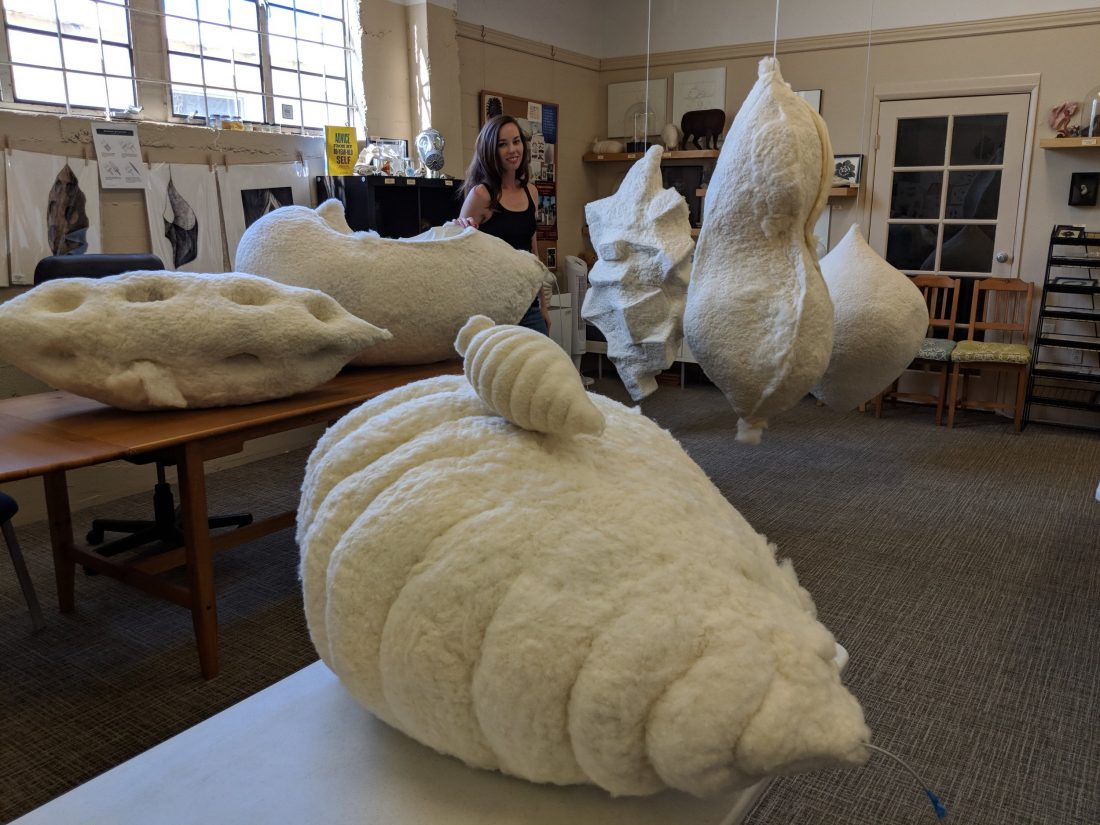
Needle Felting The Art & Craft
Needle felting goes back to the 1980s. It was created by David & Eleanor Stanwood. They took needles from a wool factory and used them to create tiny pieces of felt without any water or soap. The skills for needle felting were then taught to Ayala Talpai who wrote books and taught others to needle felt. Today, needle felting is still not as popular as wet felting. However, it has a strong following with people who enjoy to do arts and craft
Article by Kate Barsotti, November 2013
Needle felting, as a craft and art, is gaining in popularity and recognition. However, I still meet with Weird Looks when I take wool and needles out in public.
“Is that voodoo? Anger management?”
“How long did it take you to do that?”
“Do you make money?”
I don’t mind such questions except for the bit about the money. For these inquisitors, I summon up a whopper of a lie. “Money? Gobs of it. Such a bother. If I don’t finish at least three mice and fifty bunnies, I won’t be able to make the yacht payment.”
Stab, stab, stab.
What is all that jabbing about, anyway?
In researching this article, I wanted to explain the difference between wet felting (traditional method) and needle felting. The first thing I found is that traditional felters disagree on the best approach for creating a piece of felt. I encountered the Must Use Hot Water camp and the Soap Isn’t Necessary clan, plus the Rollers, Beaters, and Draggers (it sounds like a Quidditch game gone awry).
At the most basic level, to make traditional felt, you need clean wool, friction, and moisture to interlock the scales of the wool fibers. A good work ethic, patience, and a strong back don’t hurt, unless you have a horse or camel willing to help.
Who invented felt?
The jury is still out. Felt and other fibers may have been abundant in ancient societies, but unlike metal tools or clay shards, fibers are rarely preserved for archaeologists to find (this problem includes basket weaving, too, which may have been a highly valued and difficult skill).
In spite of sketchy evidence, we can safely speculate the earliest peoples made felt. While it takes much work, felting does not require complex equipment or techniques. Both nomadic and settled peoples could produce felt for clothing, shelter, saddles, etc. Felt is relatively strong, slow to burn, and offers protection from the elements. Old felt can serve as a base for new felt, so nothing is wasted.
While experts disagree on which domesticated animal came first (most say the dog via the wolf), sheep and goats are also early contenders, showing up in significant numbers in northern Iraq around 9000 B.C. Perhaps dogs first helped human beings to hunt for food and guard the tribe; later, dogs herded other domesticated animals. (The domestication of cats is harder to determine. Recent evidence suggests cats earned a place beside humanity around the late Stone Age, far earlier than first theorized. We cannot be sure if they were true pets or opportunists attracted to mice and rats nibbling away grain stores. It’s possible cats domesticated people and we are the longest-running inside joke in the animal kingdom.)
Needle felting
Needle felting is a dry method. Special needles (used in industrial felting machines) penetrate the wool and tangle upper fibers to inner fibers. These industrial needles have been with us since the mid 19th century; they were not widely used until the mid 20th century, when wool waste became an attractive option for mattresses, car interiors, and the like.
Needle felting lends itself to either 2D embellishments or 3D sculptures. That’s where the artists come in.
In the 1980’s, Eleanor and David Stanwood wanted to make light wool batting for high quality quilts and comforters. Industrial needles solved the problem. Along the way, Eleanor created other designs and products, such as scarves and wraps. Her work is beautiful and she includes a more in-depth history on her website.
Most sources point to Ayala Talpai as the pioneer of sculptural felting. Ayala is a true free spirit, artist, and teacher. In addition to sculptural felting, she may be the inventor of passive felting: laying dry pre-felt under your bedding and allowing your night time slumbers to provide the moisture and friction (see Tips & Tricks on her website).
So what’s going on now?
I’m not going to venture into the debate of craft versus art. I offer are a selection of sculptors creating work I admire. One thing I noted: these sculptors use various breeds of wool and tend to prefer simpler tools. I am cheered by the idea of a lineage: these artists learned from other artists, passing along knowledge and refining it. May they inspire you as well.
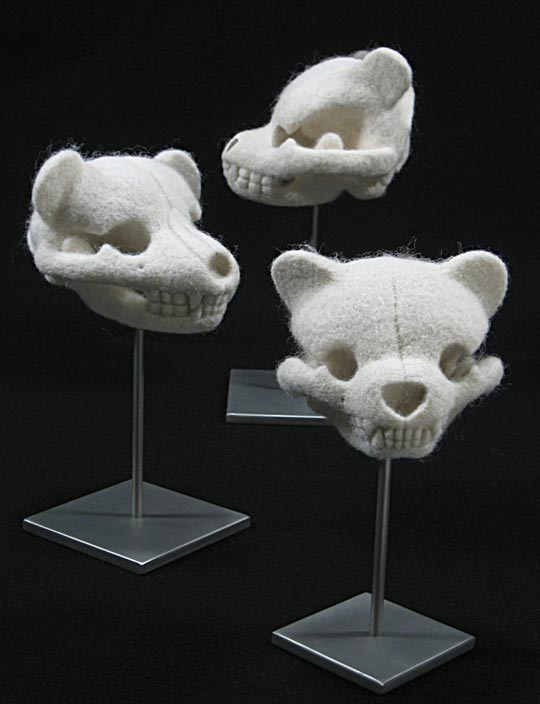
Stephanie Metz www.stephaniemetz.com
What first attracted you to needle felting?
I stumbled across needle felting. Trained in classical sculptural techniques and traditions, I had no experience or education in anything fiber related. I was out of school, working in a frame shop, and feeling frustrated at my lack of work space to make sculpture. A friend showed me an article about wet felting, and I was intrigued at the thought of such an alchemical sort of transformation: that soft wool could become structural and solid through the use of hot, soapy water and hand work. When I finally went to a yarn store to play with the technique, the owner immediately directed me instead toward a book on needle felting, The Felting Needle, From Factory to Fantasy by Ayala Talpai. Perhaps I mentioned my sculptural proclivities; in any case it was a totally novel process to me, and I started making a small seated figure, similar to the anatomical studies I had made in college. I had no serious plans for felting; I was playing and experimenting and teaching myself what I could do. I had no concept of the ‘right’ way to do it, if there even was one – I started out trying to make felt act and look like the traditional hard sculptural media like metal, stone, and wood. Eventually I embraced the soft aspects of this intriguingly hard/soft medium, and I really enjoy exploiting the possibilities of such a contradictory material.
Do you consider yourself as a sculptor or a fiber artist? Do such labels matter?
I consider myself a sculptor who happens to use fiber as my medium. Why does it matter? Because I think my work lives very much in the space of three-dimensional, solid form, and it seems strange to define it by the material it’s made from. Granted, sculptors who use nothing but bronze can and do define themselves as ‘bronze sculptors’, and the material I use is a huge influence on what I make. But I also think the term ‘fiber artist’ seems to narrow the discussion and the audience. My background, education, and experience is in sculpture; I have virtually no formal education in textile or fiber art – which means I’m probably both breaking a lot of rules and reinventing the wheel, but it works for me.
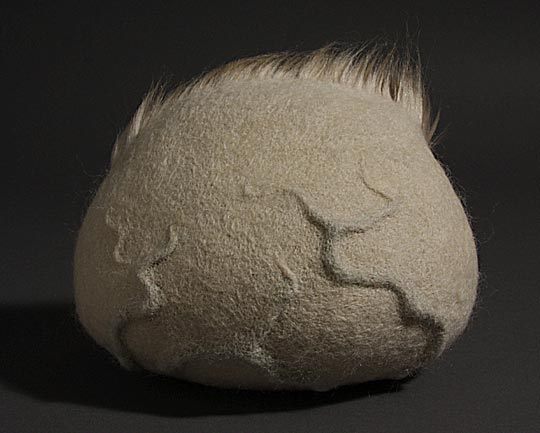
Stephanie Metz
What’s your favorite wool (in terms of breed)? Do you have a favorite tool and a specific way to use it?
I used to use Corriedale wool roving because it felts well and I can buy it in bulk; lately I’ve been using organic wool batting in great volume from a bedding company, but I don’t know what breed it is. I use felting needles, and tend to have several different multi-needle holders with different arrangements and quantities of felting needles at the ready as I work. For details I often use a single needle, but for large areas I use three to five needles well spaced apart. The process is simply to poke wool into compact forms, and join them together into more complex forms through more poking. I dance with the danger of repetitive stress injury, but my lifestyle and work habits help minimize that: I have sons in first grade and preschool, so I have limited studio hours spread out over a given week.
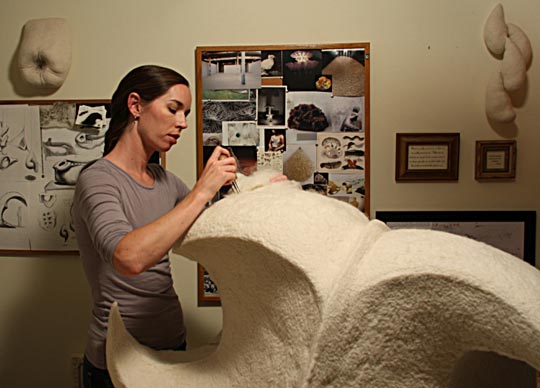
Stephanie Metz at work
What advice could you offer to someone starting her first needle felting project?
I would counsel someone just starting out with needle felting to play, experiment, and be patient. Needle felting rewards patience and steady work: to get the kind of finish you want you have to put in the time. There is no substitute for showing up and doing the work – I am a big fan of the concept “learn by doing.” But you also have to educate yourself in the basics: if you want to make a felt sculpture of a person that looks realistic, it helps to study the human figure, draw from it, and sculpt it in clay until you really understand it. Needle felting is just a technique to apply to sculpting. Understanding and making three-dimensional forms takes practice regardless of the medium you’re using.
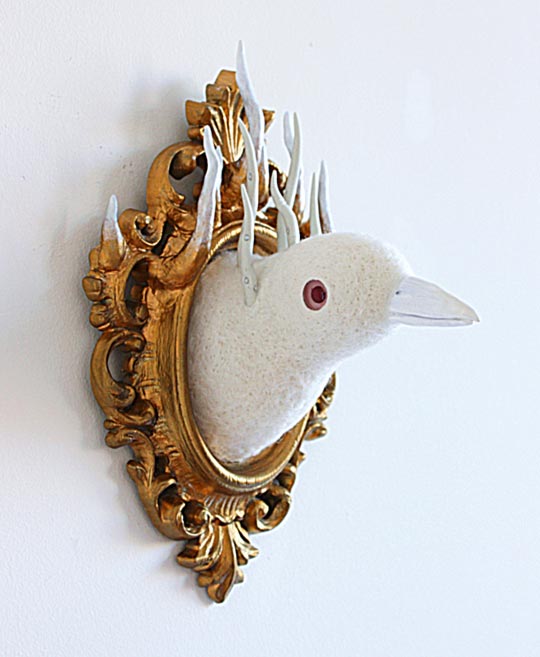
Textile art by Zoë Williams
What first attracted you to needle felting?
I think it was the precision and control of the medium. The moment I got my hands on a felting needle and some wool, it just clicked. I’m still amazed at the way the wool takes shape as I apply layer after layer of fiber. I suppose there is a part of me that enjoys the repetition and tedium of it all too.
Do you consider yourself as a sculptor or a fiber artist? Do such labels matter?
I consider myself an artist, and I consider what I make to be sculpture. “Fiber art” is a label that I’ve found to be pretty loaded, while “sculpture” is relatively neutral. I prefer for my work to speak for itself, so instead of trying too hard to describe what I do, I usually just try to have a picture handy.
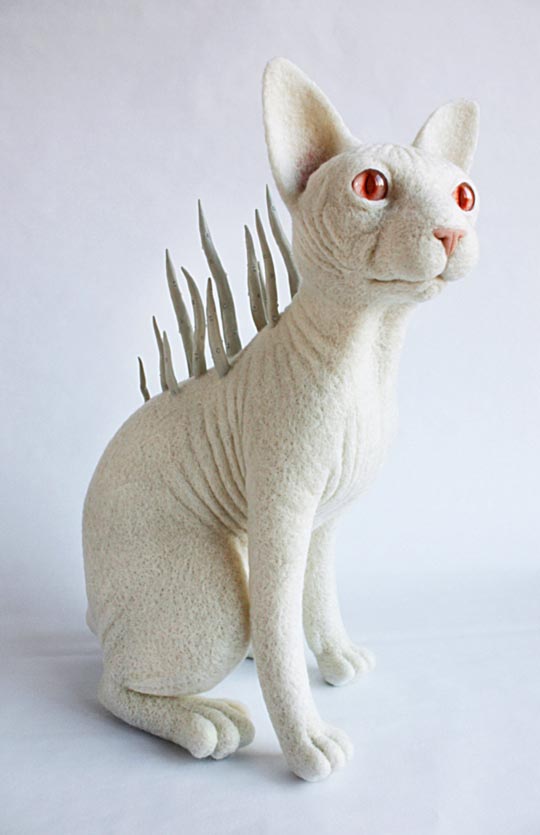
Textile art by Zoë Williams
What’s your favorite wool (in terms of breed)? Do you have a favorite tool and a specific way to use it?
I favor a combination: Corriedale (or Romney) for the bulk of the sculpture and a layer of Superfine Merino for the outside. I also enjoy incorporating other fibers, like silk, into my work. My favorite tool is a single felting needle. I’ve tried the multi-tool, but I don’t think it gives good penetration or control, so I rarely use more than one needle at a time. I don’t really care for all of the different gauges and shapes either. Instead, I prefer to use a coarse or medium gauge triangle for everything and just vary the pressure and depth of my thrust.
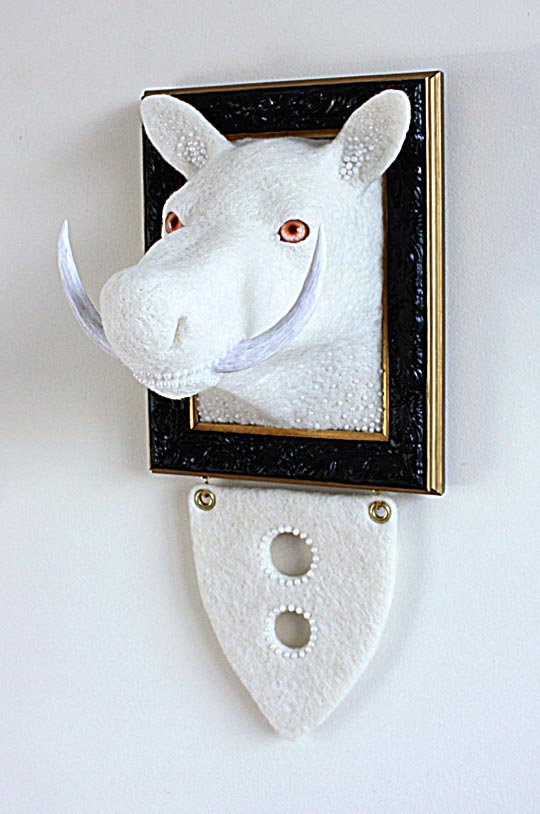
Textile art by Zoë Williams
What advice could you offer to someone starting his/her first needle felting project?
Felt is an amazingly forgiving material. You can do pretty much anything with any wool you wish, but to make things easier, I recommend starting out with something that felts readily, like Corriedale. I also recommend starting with a project that doesn’t have too many small parts, as these are where you are most likely to stab yourself. Other than that, I think it’s perfectly fine to just learn as you go. I am completely self-taught!
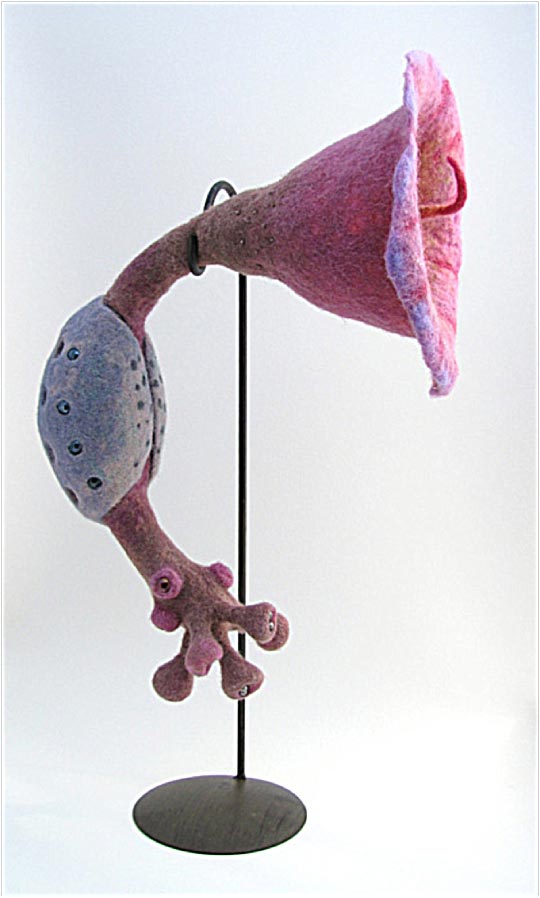
Textile art by Shana Kohnstamm
Shana Kohnstamm shanakohnstamm.com
What first attracted you to needle felting?
My first introduction to felting was during a wet felting workshop in 2010 and I loved being able to manipulate the fibers so quickly. As I was searching local yard shops for roving, a sales clerk suggested I try needle felting. I grabbed a couple of needles and some funky wool (meant for spinning) but I couldn’t get the hang of it on my own. Once I saw someone demonstrate needle felting in person, the light went on and I was hooked.
When I was a kid, my first art classes were all in the pottery studio. Needle felting is akin to that hand-building process except you don’t need the special equipment (nothing is going to blow up in the kiln!), it’s far less messy, and you apply the color as you go. Utilizing both wet & needle felting techniques, there are endless possibilities for creativity.
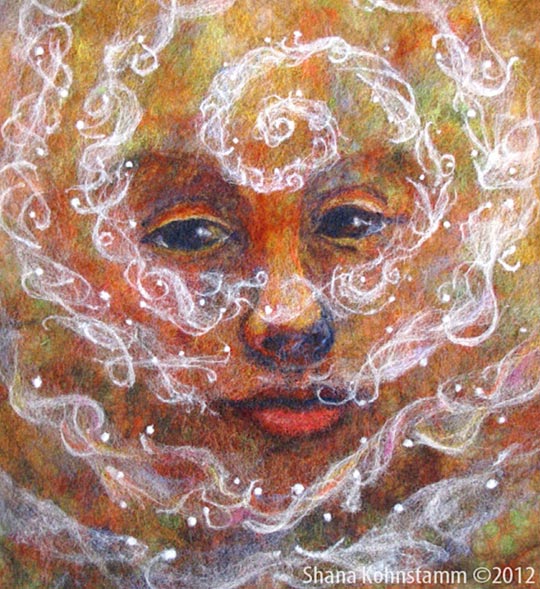
Textile art by Shana Kohnstamm
Do you consider yourself as a sculptor or a fiber artist? Do such labels matter?
I’m a sculptor. Coming from a fine art background, I tried to embrace the label of Fiber Artist for the first few years after switching to a craft-centric medium. While I enjoy the exhibition opportunities that present themselves in the craft world, my focus is now centered on creating art pieces. Still, if the work is good, the label truly shouldn’t matter (though try telling that to Google!)
What’s your favorite wool (in terms of breed)? Do you have a favorite tool and a specific way to use it?
I love Portuguese merino, which is hard to come by lately. Also, the Coopworth/Corriedale blend offered by Opulent Fibers is delightful. I’m always on the lookout for wool that lends itself to both needle and wet felting techniques.
My favorite tool is a 6-needle holder, filled with 38 stars, nicknamed “Stabby Jr.” (Mr. Stabby holds 12 needles!) I use it to quickly shape my core wool, which is usually quilt batting.
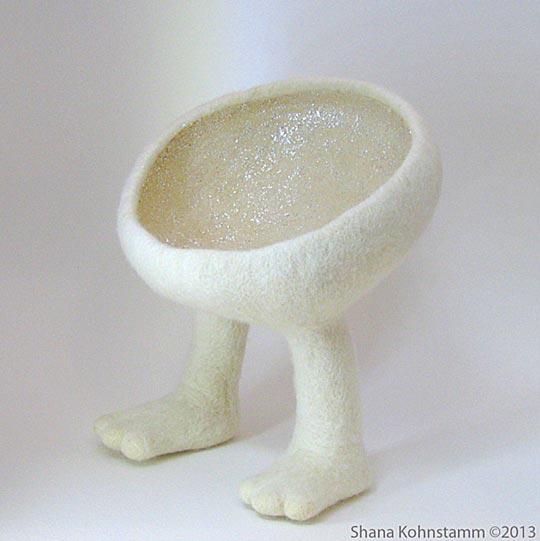
Textile art by Shana Kohnstamm
What advice could you offer to someone starting her first needle felting project?
Take a workshop with someone who knows what they’re doing, even if it isn’t a project you want to make. Learning from their experience and being able to ask questions while you work is invaluable. In general, I’ve found that artists who felt are generous in sharing their knowledge. It’s a lovely community to be in.
Article by Kate Barsotti, November 2013
